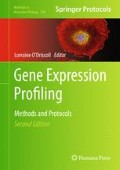Abstract
Epithelial–mesenchymal transition (EMT) is a complex series of cellular reprogramming events culminating in striking alterations in morphology towards an invasive mesenchymal phenotype. Increasingly, evidence suggests that EMT exerts a pivotal role in pathophysiological situations including fibrosis and cancer. Core to these dynamical changes in cellular polarity and plasticity is discrete modifications in cytoskeletal structure. In particular, newly established actin-stress fibres supplant a preceding system of highly organised cortical actin. Although cumulative studies have contributed to elucidation of the detailed signalling pathways that underpin this elaborate molecular process, there remains a deficiency regarding its precise contribution to cellular biomechanics. The advent of atomic force microscopy (AFM) and high-content analysis (HCA) provides two innovative technologies for dissecting the relationship between EMT-related morphological and structural alterations and cell mechanical properties. AFM permits acquisition of high resolution topographical images and detailed analysis of cellular viscoelasticity while HCA facilitates a comprehensive and perspicacious assessment of morphological changes. In combination, they offer the possibility of novel insights into the dynamic traits of transitioning cells. Herein, a detailed protocol describing AFM and HCA techniques for evaluation of transforming growth factor-β1-induced EMT of alveolar epithelial cells is provided.
Access this chapter
Tax calculation will be finalised at checkout
Purchases are for personal use only
References
Lee, J.M., Dedhar, S., Kalluri, R., Thompson, E.W. (2006) The epithelial-mesenchymal transition: new insights in signaling, development, and disease. J Cell Biol. 172, 973–81.
Kalluri, R., Neilson, E.G. (2003) Epithelial-mesenchymal transition and its implications for fibrosis. J Clin Invest. 112, 1776–84.
Guarino, M., Rubino, B., Ballabio, G. (2007) The role of epithelial-mesenchymal transition in cancer pathology. Pathology. 39, 305–18.
Radisky, D.C., Kenny, P.A., Bissell, M.J. (2007) Fibrosis and cancer: do myofibroblasts come also from epithelial cells via EMT? J Cell Biochem. 101, 830–9.
Kalluri, R., Weinberg, R.A. (2009) The basics of epithelial-mesenchymal transition. J Clin Invest. 119, 1420–8.
Savagner, P. (2001) Leaving the neighborhood: molecular mechanisms involved during epithelial-mesenchymal transition. Bioessays. 23, 912–23.
Wendt, M.K., Allington, T.M., Schiemann, W.P. (2009) Mechanisms of the epithelial-mesenchymal transition by TGF-beta. Future Oncol. 5, 1145–68.
Thoelking, G., Reiss, B., Wegener, J., Oberleithner, H., Pavenstaedt, H., Riethmuller, C. (2010) Nanotopography follows force in TGF-beta1 stimulated epithelium. Nanotechnology. 21, 265102.
Shahin, V., Barrera, N.P. (2008) Providing unique insight into cell biology via atomic force microscopy. Int Rev Cytol. 265, 227–52.
Rausch, O. (2006) High content cellular screening. Curr Opin Chem Biol. 10, 316–20.
Lieber, M., Smith, B., Szakal, A., Nelson-Rees, W., Todaro, G. (1976) A continuous tumor-cell line from a human lung carcinoma with properties of type II alveolar epithelial cells. Int J Cancer. 17, 62–70.
Small, J., Rottner, K., Hahne, P., Anderson, K.I. (1999) Visualising the actin cytoskeleton. Microsc Res Tech. 47, 3–17.
Hutter, J.L., Bechhoefer, J. (1993) Calibration of atomic-force microscope tips. Rev Sci Instrum. 64, 1868–73.
Acknowledgements
STB is funded by an IRCSET Government of Ireland Postgraduate Scholarship in Science, Engineering and Technology. This work has been funded in part by a Strategic Research Cluster grant (07/SRC/B1154) under the National Development Plan co-funded by EU Structural Funds and Science Foundation Ireland.
Author information
Authors and Affiliations
Corresponding author
Editor information
Editors and Affiliations
Rights and permissions
Copyright information
© 2011 Springer Science+Business Media, LLC
About this protocol
Cite this protocol
Buckley, S.T., Davies, A.M., Ehrhardt, C. (2011). Atomic Force Microscopy and High-Content Analysis: Two Innovative Technologies for Dissecting the Relationship Between Epithelial–Mesenchymal Transition-Related Morphological and Structural Alterations and Cell Mechanical Properties. In: O'Driscoll, L. (eds) Gene Expression Profiling. Methods in Molecular Biology, vol 784. Humana Press. https://doi.org/10.1007/978-1-61779-289-2_14
Download citation
DOI: https://doi.org/10.1007/978-1-61779-289-2_14
Published:
Publisher Name: Humana Press
Print ISBN: 978-1-61779-288-5
Online ISBN: 978-1-61779-289-2
eBook Packages: Springer Protocols

